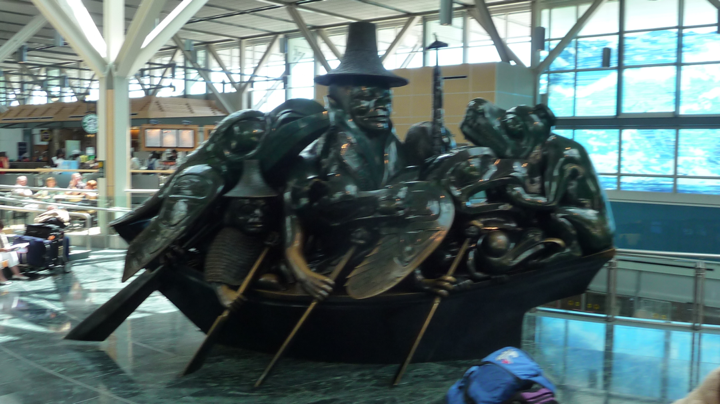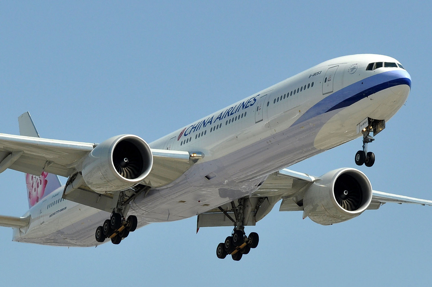Seattle/Tacoma - SEA
/This traditional Pacific port of entry is easy to use.
Seattle’s historic ties of trade with and immigration from Asia, its many technology and service companies, and its relatively short flying times have attracted many airlines to start Transpacific service here.
Delta Airlines has built up a strong Asian operation out of Seattle with nonstops to Beijing, Hong Kong, Seoul-Incheon, Shanghai-Pudong, and Tokyo-Narita.
Fellow SkyTeam carrier Xiamen Air has started a 3-per-week service from Seattle nonstop to Shenzhen in the Pearl River Valley, continuing on to Xiamen on China's southeast coast.
Korean Air offers 5-per-week nonstop service to their massive hub at Seoul-Incheon. Some same-day connections are available to interior Chinese cities and other Southeast Asian destinations; many more can be reached with an overnight stay (Incheon has a hotel inside the terminal for just this reason.)
ANA - All Nippon Airways, in the Star Alliance with United, has a daily nonstop to their big Tokyo-Narita hub; many Southeast Asian cities can be reached same-day.
Asiana Airlines - in the Star Alliance with United - runs a 5-per-week nonstop to Seoul-Incheon. A few interior Chinese cities can be reached same-day; otherwise an overnight stay is needed.
Hainan Airlines, an independent Chinese carrier, flies nonstop 5 times a week to Beijing, where they offer excellent same-day connections to many interior cities. They have also started a 3-per-week nonstop to Shanghai-Pudong.
EVA Airways flies daily nonstop to Taipei. Airlines from Taiwan have only recently been allowed to fly into mainland China; your best connections on EVA are to Fujian and Guangdong provinces. The return flight into Seattle arrives too late in the evening to make same-day onward flights, and the departure from Seattle leaves well after midnight.
Domestically, Seattle is the headquarters and main hub for Alaska Airlines and their commuter arm, Alaska Horizon, as well as a major base for Delta, who has its own commuter services too. Sea-Tac is also an important focus city for United. These networks link Seattle to every major city in the Pacific and Alaska time zones, and every second-tier city in the Pacific Northwest.
Every major US airline serves SEA, including the low-cost carriers Southwest, JetBlue, and Spirit. No matter which frequent-flyer program you’re on, or part of the country you’re from, you’ll have numerous options.
Customs Arrival
All international flights arrive at the South Satellite. As you deplane, you’ll be directed along ramps to the level below the gate area. Even though many overseas flights arrive midday, waiting time for passport checks and luggage retrieval usually takes between 30 to 60 minutes. (Even on domestic flights, Sea-Tac’s baggage delivery is super-speedy; your suitcases will be at the carrousel before you can get there.)
After clearing Customs, if you have an onward flight, stop at the baggage re-check counters, then go through security screening, and walk over to the underground tram stop (for Delta flights, head upstairs; for all other carriers, take the tram to the main terminal, where you can access all other gates.)
If Seattle is your final destination, after you’ve picked up your bags and gone through the declaration line, you’ll set your bags back down on a high-speed conveyor belt which will zip them over to Baggage Claim carrousel #1 in the main terminal. Meanwhile, you and your family will bypass security and get on an isolated tram car which will take you to the Baggage Claim exit. (You don’t want to cram that car full of everybody’s bags...)
Navigating the Airport
The Sea-Tac complex uses an X-shaped layout: Concourses A and B extend south of the central terminal, while Concourses C and D run north. There are two satellite gate areas, South and North.
Thanks to robust growth of international service, Concourse A and the South Satellite are being linked by a skybridge, and a number of A-gates will be able to handle overseas arrivals.
The North Satellite is also being expanded to handle Alaska Airlines' hearty growth.
Concourse A houses United, Air Canada, and Sun Country, as well as many Delta flights. On Concourse B you’ll find Southwest, Spirit, and Frontier, and also Delta. Concourses C and D are the heart of Alaska’s hub operation, as well as the North Satellite. American and JetBlue also run out of Concourse D. The South Satellite is Delta territory.
While Sea-Tac is spread out, walking times are quite short thanks to three underground tram lines, all inside the security zone. Using the trams, you can move from the South Satellite to the North Satellite in less than 15 minutes. Concourse A is the longest, but has been equipped with moving sidewalks for speedy transit.
The entire complex has been freshly renovated with wide corridors, expansive windows, and engaging art. On clear days you can see the Cascade Mountains and islands in Puget Sound. Even on overcast days the terminal is filled with natural light.
Family-friendly Amenities and Hidden Gems
A large play area is located between the central food court and the beginning of the A-Concourse. There’s also plenty of seating for parents, too.
If you have several hours between flights, and children who want to stretch their legs, the far end of the A-Concourse (gates A11-A14) has great views on a sunny day, and you can often have the entire area to yourselves.
Local artwork permeates the terminal, often with an aviation or Native American theme, giving great opportunities for kids to ask questions, look for patterns, and inspire their own creativity.
The Pacific Northwest music scene also resonates at Sea-Tac as they have created an ambient music stream for the terminal featuring local artists.
Another semi-secret gem is the Atrium at the south end of the ticketing counters. This area is outside security (so you’ll need to be screened again to get to your flight), but the open space, rocks to clamber over, and seating outside for fresh air are worth a visit if you have time.
Restrooms
Several family restrooms are available on every concourse and satellite. In addition, the stalls in regular restrooms incorporate several sturdy coathooks, plus a shelf above the toilet, making it much easier to manage your cargo and children. Cleanliness is very good, and the facilities are uniformly in excellent condition.
Food and Shopping
Sea-Tac offers some gift/newsstand options on each concourse and satellite, at least one sit-down restaurant and several fast-food counters; often one will feature Asian cuisine. And coffeeshops, lots and lots of coffeeshops (and not just Starbucks.)
For the most diverse selection of gifts, a good-sized bookshop, numerous sit-down restaurants, and additional fast-food options, go to the central food court, where all four concourses converge and the view is amazing. There are several shops here with kids’ sections, as well, including the awesome Planewear - gear, gadgets, and gifts all about aviation!
Connectivity
WiFi is available throughout the terminal and gate areas at no charge!
Seattle’s light rail line allows access north to Chinatown / International District (about 25 minutes) and the central Downtown corridor (about 30 minutes.)































